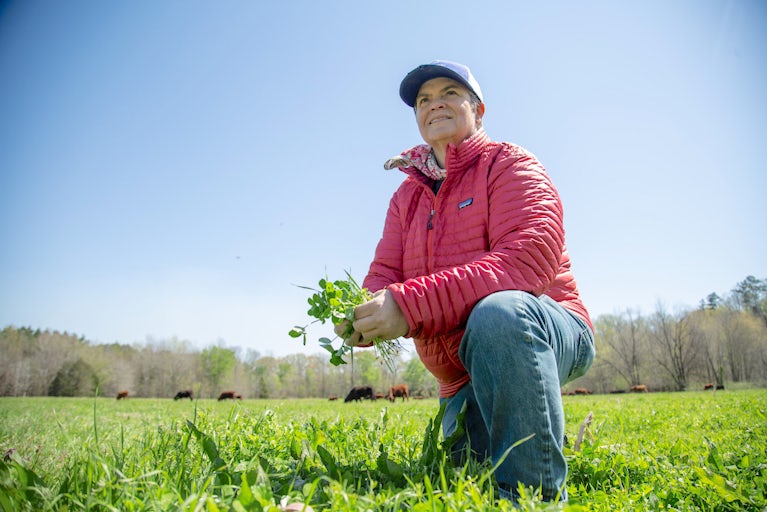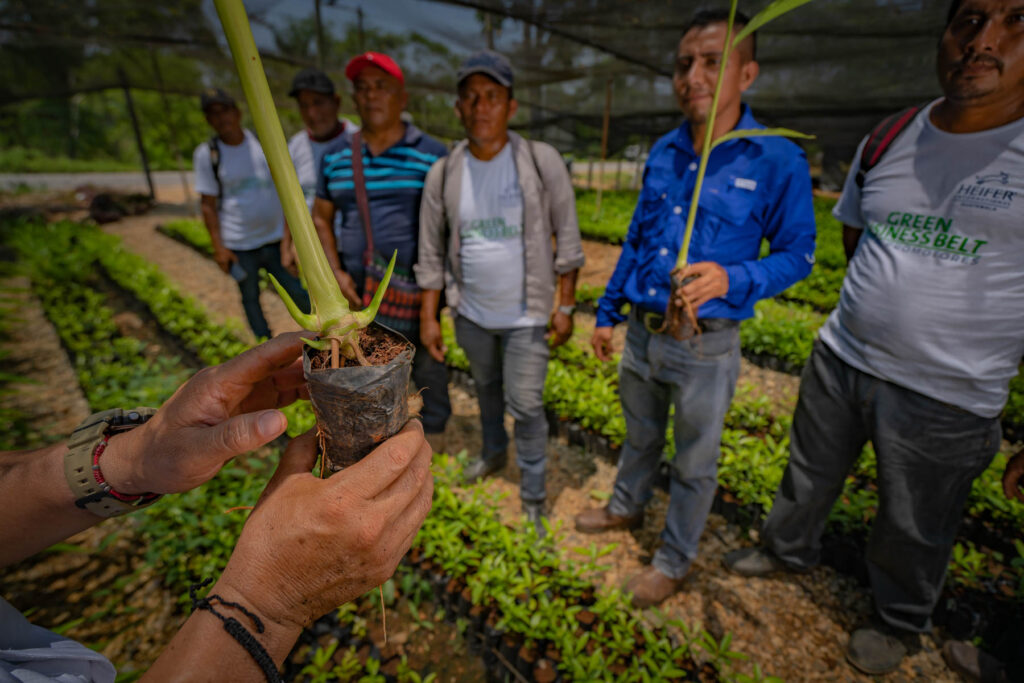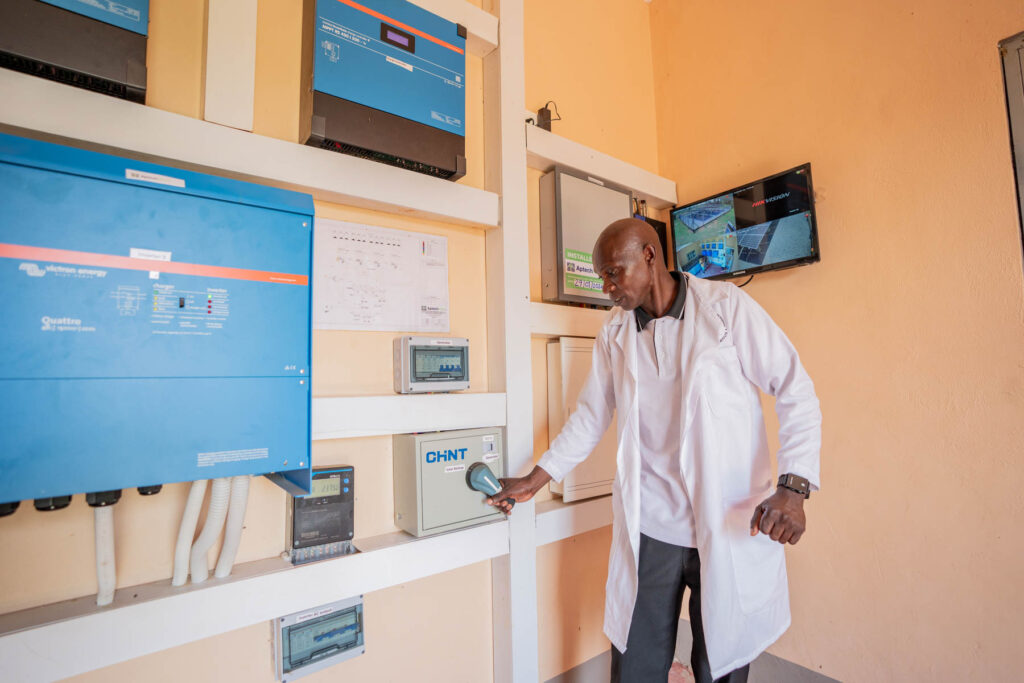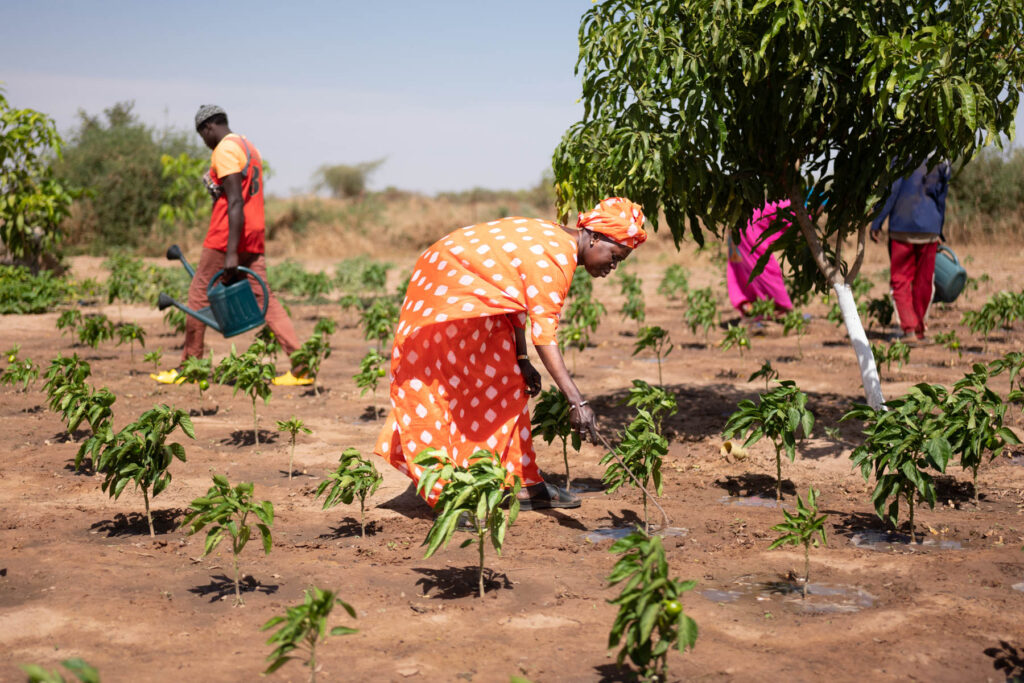
Heifer Ranch Achieves Regenerative Agriculture Milestone
By Aimée Knight | April 30, 2021
In Ecuador’s Andean lowlands, a stretch of cropland lies depleted. Its once-rich topsoil, now reduced to sand, blows into dust with every breeze.
Just beyond a line of trees, an organic garden thrives with squash vines curling around tomato plants, cabbages swelling, and blackberry bushes hanging heavy with fruit. Beneath the surface, the soil is dark and alive, a sign of regenerative farming methods that restore organic matter and biodiversity.
This renewal is what regenerative agriculture makes possible — for land worn down by overuse, for ecosystems strained by climate change, and for communities in need of resilience. As the world faces the triple challenge of producing more food with less ecological harm in increasingly difficult conditions, Heifer International partners with small-scale farmers to build food systems that sustain both people and the planet.
At its core, regenerative agriculture is a restorative way of farming. It creates self-sustaining systems that promote biodiversity with a focus on healthy, living soil and works with nature’s cycles of energy, water, minerals and animals to create environmental balance. Conventional farming often prioritizes short-term yields, stripping away soil fertility. Regenerative farming does the opposite, rebuilding the land’s capacity to heal so soils stay rich and productive for the future — while nurturing healthy food and providing profitable livelihoods for farmers.
These ideas come to life through practical methods on farms large and small.
Heifer promotes regenerative agriculture through three core areas that connect healthy ecosystems, strong communities and fair food systems.

Regenerative agriculture doesn’t follow a single recipe. Instead, each community adapts to its land, culture and needs. Yet the outcomes often look alike in the form of healthier farms, stronger incomes and less strain on the environment. The following case studies show how regeneration is taking root across diverse landscapes.
Since 2012, Heifer International has worked with goat-farming cooperatives in Nepal, reaching 300,000 smallholder farmers — most of them women.
Farmers have moved away from open grazing, where goats feed on communal lands and forests, leading to deforestation and soil erosion, to a more sustainable system. By planting cultivated fodder on 16,000 hectares and building improved sheds to manage manure, they’ve reduced pressure on the environment while improving animal health and livestock productivity.
These practices cut water use by up to 98 percent and lowered greenhouse gas emissions by as much as 91 percent. As regenerative methods spread, farmers have doubled their market supply, and raised incomes and women have taken on stronger leadership roles in their cooperatives as a result.

In 2023, Heifer partnered with the Powering Renewable Energy Opportunities (PREO) program, funded by UK aid and the IKEA Foundation and delivered by the Carbon Trust and Energy 4 Impact, to bring solar power to dairy cooperatives in Uganda.
Across three sites in the country, new solar systems generating more than 100 kWp replaced diesel generators. The switch cut energy costs, reduced dependence on unreliable power grids and improved milk chilling, lowering spoilage and raising quality. At Migina Milk Collection Centre alone, energy costs fell by 42 percent.
The environmental impact was equally significant, with carbon dioxide emissions dropping by nearly 11 tons per month. Training programs run with partners Aptech Africa Ltd. and All In Trade continue to equip cooperative members to operate and maintain the systems while also creating jobs and building local expertise in renewable energy.
In 2020, Heifer launched the Green Business Belt Signature Program in Alta Verapaz, Guatemala, to strengthen spice farming and support 6,500 families, especially women and youth.
Municipal and community nurseries produced more than 226,000 tree and spice seedlings, which farmers planted to establish agroforestry-based spice systems that blend native trees with high-value spice crops. These mixed plantations expanded natural habitat, improved soils and contributed to carbon sequestration across 4,750 acres. Farmers also adopted climate-resilient spice varieties, installed 215 mobile dryers that cut both drying time and firewood use, and built compost stations that generated 130 tons of organic fertilizer.
By 2023, household incomes had more than tripled, with $343,000 generated from spice sales. Seventeen producer groups strengthened their operations through entrepreneurship training, with nearly all participants being women. Family cooperation also grew, rising from 50 to 82 percent, showing how regeneration strengthens both livelihoods and community ties.
Regenerative agriculture is the foundation of Heifer International’s environmental strategy, Caring for the Earth. Our aim is threefold: to strengthen farming families’ resilience and income, increase sustainable food production and support healthier ecosystems. Regeneration allows us to pursue all three at once.
There is no one-size-fits-all solution. What works in Nepal may not work in Guatemala, and approaches differ even within the same country depending on geography, culture and economic needs. Every project begins with local consultation to identify practices that fit the community.
From there, we build partnerships — with development organizations, investors, governments, corporations and local groups — to expand access to finance and provide tailored technical assistance. These collaborations help small-scale farmers solve immediate challenges and prepare for future risks.
Finally, we measure impact using internationally recognized standards such as the Gold Standard, a global benchmark for carbon and climate projects to track carbon capture and environmental benefits. By grounding our work in both local knowledge and global accountability, we help farming communities prosper while restoring the land that sustains them.

The reach of regeneration extends far beyond individual farms. In 2023, Heifer programs alone sequestered the equivalent carbon emissions of 2.3 million cars. Still, climate impact is only part of the story. In 2024, more than 673 million people faced hunger worldwide. Many of them were smallholder farmers — people who produce a third of the world’s food yet remain among the most vulnerable to climate shocks.
This is where regeneration can turn the tide. According to the International Union for Conservation of Nature (IUCN) and Vivid Economics, regenerative agriculture could increase yields by 13 percent across Africa by 2040, create 5 million jobs and sequester up to 4.4 gigatons of carbon in soil. That scale of action has the power to fight hunger, grow economies and restore the environment all at once.
Long-term solutions may look different from place to place, but the essentials hold steady. Farmers everywhere depend on healthy soil and clean water, resources that have sustained agriculture for millennia, and Heifer’s work helps protect them for generations to come. Just as depleted ground can once again grow lush with fruit and grain, regeneration can restore landscapes worldwide, renewing farmers’ independence, communities and hope for the future.
Cart is empty
Success!
Please be patient while we send you to a confirmation page.
We are unable to process your request. Please try again, or view common solutions on our help page. You can also contact our Donor Services team at 855.9HUNGER (855.948.6437).
Covering the transaction fee helps offset processing and administrative fees that we incur through taking payments online.